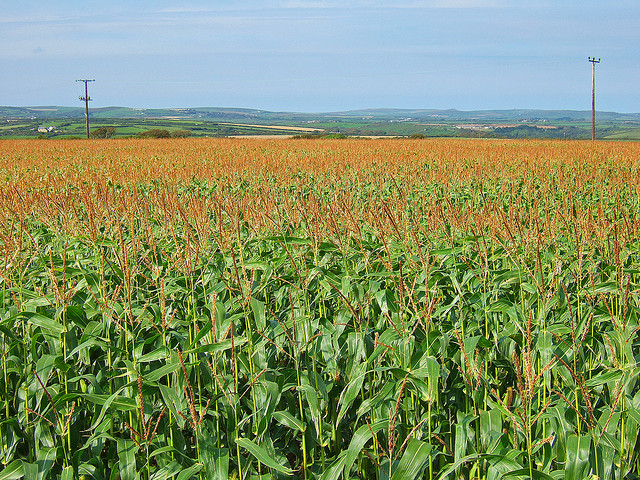
The dirty but necessary way to feed 9 billion people

Modern crops, such as corn, depend heavily on phosphate fertilizers.
Photo: flickr/Darren Beswick
The modern agriculture system that feeds most of the world’s population relies in large part on phosphorus, a chemical element that is mined from a small number of ancient seabed locations around the world. Phosphorus (in the form of the compound phosphate) is an essential ingredient in fertilizer and is critical for food systems worldwide, but about 75 percent of it is mined and exported from just one country – Morocco.
The United States will become entirely reliant on imports of phosphorous within roughly three or four decades – and as phosphate deposits become more scarce, the price of fertilizer could spike and massively disrupt our food supply.
In a Future Tense article for Slate magazine, Arizona State University professors Bruce Rittmann and James Elser propose a three-part solution to this looming crisis.
Rittmann is a Regents’ Professor in the School of Sustainable Engineering and the Built Environment, one of ASU’s Ira A. Fulton Schools of Engineering, and director of the Swette Center for Environmental Biotechnology in ASU’s Biodesign Institute. Elser is a Regents’ Professor in the School of Life Sciences in the College of Liberal Arts and Sciences.
First, Elser and Rittmann propose that we decrease our demand for mined phosphorus by recovering and reusing the chemical from agricultural and human waste and sewage. This dirty but necessary strategy not only provides a high yield of phosphorus, but also cleans phosphorescent waste from water, and provides an opportunity to generate clean energy through anaerobic digestion, or microbial electrolysis cells.
Second, we will need to develop strategies to limit erosion and drainage on fertilized fields, they say, which will decrease waste and lower global demand significantly.
Finally, reducing the world’s consumption of meat by 50 percent will further reduce demand for fertilizer – because we will need to grow less feed for livestock – and drastically cut water pollution.
To learn more about Elser and Rittmann’s plan to safeguard the future of the agriculture system, read the full article at Future Tense.
Future Tense is a collaboration among ASU, the New America Foundation and Slate magazine that explores how emerging technologies affect policy and society.
Written by Joey Eschrich, [email protected], Center for Science and the Imagination
Media Contact:
Joe Kullman, [email protected]
(480) 965-8122
Ira A. Fulton Schools of Engineering



































